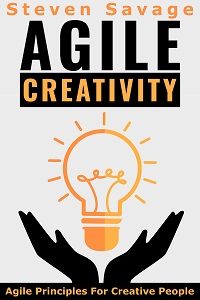(This column is posted at www.StevenSavage.com and Steve’s Tumblr. Find out more at my newsletter.)
Giant tentpole movies and famous book series everyone loves and knows about are a bad idea.
Yes, I’m thinking the Marvel Cinematic Universe might not be a good idea. I’m concerned that Megaseries like Harry Potter and Twilight may have been too widespread. I’m happy that My Hero Academia may be the new gateway anime, but I’m concerned it could become too big in an age where everyone wants to find the “right” thing to see or read.
Why do I think this? Well, you’re lucky because I have a reason for my ranting.
First, I think we’ve become conditioned to produce and look for The Big Hits. What’s the hip thing to get in on? What’s the thing I must make to corner the market? The drive to make The Big Thing becomes not about what it’s about but marketing and social positioning – it degrades the literary elements.
Secondly, I think it encourages repetition and unoriginality. Because we are trying to make What Works and What Sells and What Gets Big, everything ends up the same soup of warmed-over ideas. It’s probably easier to make the Big Thing in a mix of doing the same with a few twists or famous faces or advocates.
Third, because people are trying to make What’s Big and follow What’s Big, people burn out. Do you want to watch another by-the-beat film? Do you want to read another story like the last? I once left SF and fantasy for years because it seemed All Alike.
Four, it leads to pathetic fan wars and academic arguments. When everyone is advocating to be King of Mediocrity Mountain, no one asks if they actually want that.
So, what do we do?
I do believe that we should read historically important fiction and appreciate important movies and so on. We don’t have to make it required, we don’t have to force it, we should just advocate for understanding. Besides, some of this stuff may be important but it can be limited, bigoted, or honestly kind of be bad.
I do believe we should share literature and media, but no more preaching. Let’s encourage people to enjoy things but let’s stop pursuing the next big thing – it’s wearing us out and wearing us down. It’s tiring to have so many must haves. Let’s make offerings not demands.
I do believe in standards for literature and values, but none of those are embodied in one book or one show or one movie. Let the values and standards have multiple forms and manifestations and stop looking for the Holy Grail Of The Right Thing.
I do believe the ideal media future is not people pursuing imitating each other or What’s Big in the hope of being the Next Big Thing. Let’s actually push for more authors getting exposure, have more literature and film and shows for different people. Let’s stop trying to be J.K. Rowling or George R.R. Martin levels of fame, and just focus on being good and making a good living.
Let’s not enocurage the Big Thing or preach the Big Thing or dream of making the next big imitative Big Thing. Let’s work for diversity and high standards, history and new things, that make life interesting and dynamic.
Take down the tent poles. Let’s walk under the open sky.
-Steven Savage
